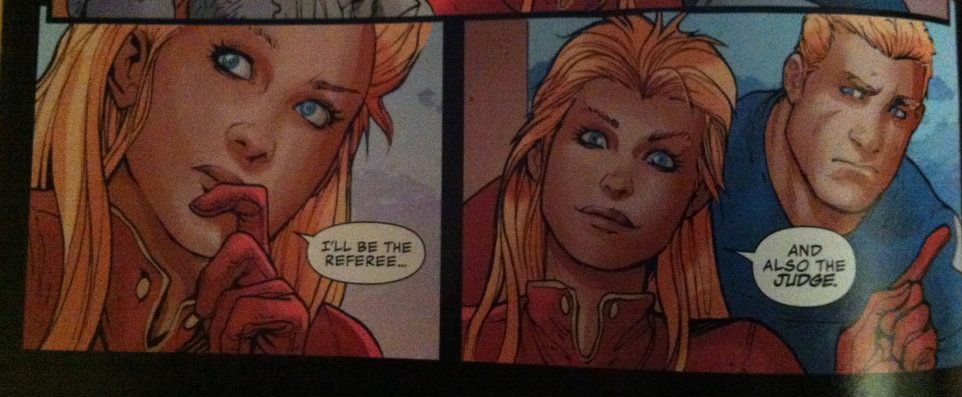Or Changes to My Top-Ten Comics
Due to poverty and an urge to buy better comics, I have decided to be super-selective about which superhero comics I read. Harnessing the Awesome Power of Maths, I have determined that I can afford to read 10 ongoing titles. So I get to read 10, and only 10, titles published by either Marvel or DC as well as one trade paperback a week of my choosing.
A complication of this is that I am forced to drop an on-going title if I want to try reading a new on-going title, an act of very tough love. Being financially responsible is the worst.
I will be adding Young Avengers and dropping Winter Soldier.
Why Young Avengers? Phonogram. That's why.
Okay, let me clarify. Phonogram is easily one of my favourite comics. In a nutshell it's a comic that presents music as literal magic in an effort to describe how amazing it is. The series is original, beautifully written, and shockingly good looking. The second chapter, "The Singles Club" deals with additional themes of growing up and defining oneself. Phonogram was written by Kieron Gillen, drawn by Jamie McKelvie with art assists by Julia Scheele and coloured by Matthew Wilson (Vol. 2).
Young Avengers is written by Kieron Gillen, drawn by Jamie McKelvie with Mike Norton, and coloured by Matthew Wilson. It's a book that follows the titular Young Avengers (Hulkling, Wiccan, Hawkeye, Marvel Boy, Miss America, and Kid Loki) and is about growing up with Superheroics being a metaphor for talent or individuality . It's a comic by the same creative team as Phonogram and deals with similar themes. If the first issue is any gauge, it is shockingly similar in theme and tone and execution to Phonogram: The Singles Club. In a world without an ongoing Phonogram comic, Young Avengers is a must read. And honestly, with the creative team involved, it's probably a must read even if Phonogram was on the stands weekly.

Why not Winter Soldier? This is another end of an era title drop. Ed Brubaker's Captain America/Winter Soldier work has been a staple of comics habit since I started reading comics as an adult. Between monthly magazine format comics and trade collections I own the entire Captain America to Winter Soldier story. It is an amazing comics work and if you are looking for a mainstream Superhero comic to read in back issues or trades, I highly recommend it. But Ed Brubaker is moving on to pursue a career making creator owned comics and writing for movies and television and is no longer writing comics for Marvel. As great as this comic has been, I cannot imagine reading a story about the Winter Soldier that isn't written by Brubaker. So I won't. But I don't think that's all...
I like endings. One of the greatest weaknesses of mainstream Superhero comics is that they don't end. Without endings there can be no real resolution, no real closure to them. Just conclusions of storylines and fresh new takes. The closest thing to a real ending I've seen in Superhero comics is the semi-conclusion and change up following a years long run on a title by a single writer or creative team. Like Brubaker leaving Winter Soldier, Fraction finishing with Iron Man, or Hickman concluding his Fantastic Four/FF run. It's kind of nice when these semi-endings occur to draw a line under everything that came before, step away from the title, and enjoy the sort-of-closure for a while. Savour the story as a complete, definitive unit of Captain America, Iron Man, or the Fantastic Four. And my dropping Winter Soldier falls into this: I'm happy with Winter Soldier, how it ended, and am not super interested in reading more right now.





























